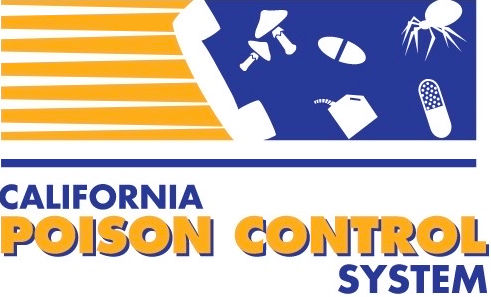Synthetic Cannabinoids
Updated February, 2023 by Nate Friedman, MD & Alicia Minns, MD
Original author Alicia Minns, MD
Introduction
Synthetic cannabinoid (SC) compounds, also referred to as synthetic cannabinoid receptor agonists (SCRAs), were originally developed to study the pharmacology of cannabinoid receptors. In recent years, however, they have emerged as drugs of abuse. Synthetic cannabinoids first emerged in Europe in 2005, and then appeared in the United States in 2009, where they were marketed initially as “K2” and “Spice” and inhaled via a pipe or rolled into a cigarette. The poorly labeled contents have been found to include a mixture of psychoactively inert herbs and aromatic extracts sprayed with SC compounds and are packaged with labels stating “not for human consumption” or “incense.” Despite federal and state regulations prohibiting the sale and distribution, illicit use continues. Many SCs are more potent than delta-9-tetrahydrocannabinol (THC), the active ingredient in marijuana, and are more likely to be associated with sympathomimetic effects (tachycardia, hypertension) and hallucinations. There is also an increase in the occurrence of seizures as well as reports of unanticipated acute kidney injury.
As of February 2023, the US Drug Enforcement Administration (DEA) has designated more than thirty SCs as Schedule 1 and continues to add SCs to Schedule 1 under its emergency scheduling authority, as novel SCs emerge with alarming frequency. In February 2023, the DEA also listed delta-8-THC and delta-9-THC-acetate, two ubiquitous synthetic cannabinoids often found in convenience stores and other easily accessible locations, as Schedule 1. State enforcement agencies have also banned additional SCs.
There are numerous street and commercial names for SC products including K2, Spice, Barely Legal, Black Mamba, Galaxy, Mojo, and Yucatan Fire. They are available through the Internet, in gas stations, and in specialized stores such as head shops.
Case presentation
A 16-year male was brought to the Emergency Department after reportedly having a seizure. He was smoking “spice” with friends when he became agitated and started to have jerking movements of his upper extremities, which had stopped when paramedics arrived on scene. His initial vital signs were a temperature of 99.1°F, blood pressure of 152/84 mmHg, heart rate of 120 beats per minute, respiratory rate of 20 and oxygen saturation of 99% on room air. He was intermittently agitated and laughed inappropriately at times. His exam was otherwise unremarkable. His ECG demonstrated sinus tachycardia with normal intervals. Complete blood count and serum electrolytes were within normal limits. He was given 2 mg intravenous lorazepam. His urine drug screen for THC metabolites and other drugs of abuse was negative. He slowly returned to normal and was subsequently discharged home without any adverse effects after 8 hours of observation.
Questions
- What is the classic toxidrome associated with synthetic cannabinoid exposure?
- What is the mechanism of action of synthetic cannabinoids?
- How is synthetic cannabinoid toxicity treated?
Epidemiology
Synthetic cannabinoids are increasingly being abused especially by those seeking a “legal high.” SCs represent a high proportion of detected new psychoactive substances (NPS) globally, with one study between 2010-2019 estimating that 19% of all novel substances were SCRAs.
Between January 1, 2010 and October 1, 2010, there were 1,898 exposures to SCs reported to the National Poison Data System (NPDS). The median age of reported exposure was 20 years, and most were men. A later retrospective study of the NPDS from 2016-2019 reported 7,600 exposures, declining over time and lower in states with legalized marijuana laws. States with more restrictive cannabis policies had proportionally higher SC exposures.
The majority of exposures reported to poison centers are acute exposures; however, some calls regarding chronic exposures are also reported. While marijuana itself is the most widely used illicit substance in the United States, there are many more calls to poison centers regarding synthetic cannabinoid exposures. One explanation for this may be that physicians have more experience managing THC-related exposures and are less likely to need the assistance of poison centers. A more likely explanation for this discrepancy is that SCs cause more severe or unexpected clinical effects.
Pathophysiology
Synthetic cannabinoids are receptor agonists that bind to the same endogenous cannabinoid receptors as THC, Cannabinoid 1, and Cannabinoid 2 (CB1/CB2). JWH-018 is one of the earliest and best characterized compounds. JWH compounds are named after John W. Huffman, a chemist from Clemson University who synthesized many SC compounds to research CB1/CB2 receptors. CB1 receptors are found throughout the body but are densely concentrated in the brain, spinal cord and peripheral nervous system affecting pain. This receptor is responsible for most of the psychoactive effects of cannabinoids such as elevating a person’s mood. Other effects mediated by this receptor include inducing analgesia, memory impairment and altering one’s sense of time. CB2 receptors are found primarily in tissues of the immune system and have a role in pain as well. Activating these receptors modulate the immune system and are anti-inflammatory. CB2 receptors have been the focus of research due to the possibility that they could decrease pain caused by inflammation without the psychoactive effects of CB1 receptors.
The chemical structures of SCs are different than THC and are far more potent than marijuana. For example, JWH-018 has four times the affinity for the CB1 receptor and ten times the affinity for the CB2 receptor. THC is also a partial agonist at the CB1 receptor, while many of the SCs are full agonists. In addition to the JWH compounds, there are multiple other groups of SCs including CP compounds, HU compounds (developed at Hebrew University) and others. The benzoylindoles and indazole derivatives now account for a substantial percentage of detected NPS. These latter compounds are quite diverse and include AB-4CN-BUTICA and MDMB-4F-BUTINACA. All are far more potent agonists at the CB receptors compared to THC.
Clinical presentation
The clinical presentation of patients presenting with SC toxicity is variable. For many users, the desired effects of SC use resemble cannabis intoxication including relaxation, disinhibition and euphoria. Nausea and vomiting are among the most common physical complaints. Most patients present with some degree of altered mental status such as central nervous system depression, hallucinations, anxiety, and agitation. Seizures are uncommon, and when they do occur, are typically single episodes, although status epilepticus has been reported. Psychosis characterized by paranoid delusions, and a disorganized, confused state, can occur. Many patients have sinus tachycardia, which typically normalizes over a 4-hour period of observation.
Compared to marijuana exposures, there is frequently more tachycardia, agitation, hallucinations and hypertension seen with SCs. Due to increased muscle activity and agitation, there is a potential for rhabdomyolysis and subsequent acute kidney injury. There are also case reports of patients presenting with chest pain and ischemic changes on ECG, although this appears rare. The variability in presentation is likely multi-factorial including the SC compound used, individual susceptibility to drug effects and the dose. Chronic use of these drugs can lead to addiction and withdrawal symptoms like what is seen with cannabis use.
Diagnosis
Diagnosis is usually based on a history of exposure. There is no specific toxidrome associated with SC products and given the variability in clinical presentation, diagnoses based on the physical exam can be challenging. Screening for other substances potentially ingested should be considered particularly in pediatric patients. SCs are not detected in routine urine drugs of abuse immunoassay screens, although independent labs offer testing. Patients may have negative drug screens for THC metabolites. Clinical testing for these compounds is under development, however these tests will most likely only detect the most common synthetic cannabinoids. Very little is known about the metabolism of synthetic cannabinoids; therefore, exposure to SCs may be challenging to prove. Thus far, analysis of body fluids relies on the detection of the parent drug.
Treatment
Treatment is primarily supportive. Initial management of these patients should include cardiac monitoring, testing serum electrolytes, and ensuring a secure airway. Recommended supportive care includes intravenous fluids and electrolytes to manage volume and electrolyte disturbances. Benzodiazepines, such as lorazepam 1-2 mg IV (children: 0.04 mg/kg) should be administered as needed for hallucinations, agitation, and seizures. Antiemetics such as ondansetron 4-8 mg IV (children: 0.15mg/kg) can be administered as needed for nausea and vomiting. In most patients, clinical effects resolve within 8 hours. A minority of patients may need admission for ongoing symptoms. ED observation is recommended until the patient demonstrates clinical improvement and can be safely discharged.
Question Answers
- What is the classic toxidrome associated with synthetic cannabinoid exposure? There is no specific toxidrome associated with synthetic cannabinoid exposure. Clinical effects are variable. The most common clinical effects are tachycardia, hypertension, agitation/irritability, drowsiness/lethargy, confusion, nausea and vomiting, hallucinations and chest pain.
- What is the mechanism of action of synthetic cannabinoids? Synthetic cannabinoids are agonists at the CB1 and CB2 receptors and are typically more potent than marijuana.
- How is synthetic cannabinoid toxicity treated? Treatment of SC toxicity is mainly supportive. Benzodiazepines should be considered to treat hallucinations, agitation and especially if seizures occur. Antiemetics should be given as needed for nausea and vomiting. Patients should be observed until clinical improvement is demonstrated.



